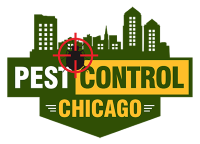Some Ideas on Pest Control Chicago You Need To Know
Wiki Article
Get This Report about Pest Control Chicago
Table of ContentsThe Basic Principles Of Pest Control Chicago The 10-Second Trick For Pest Control ChicagoThe Greatest Guide To Pest Control Chicago9 Simple Techniques For Pest Control ChicagoThe Definitive Guide to Pest Control ChicagoThe 20-Second Trick For Pest Control Chicago
Planting or collecting a plant before (or after) a parasite is present minimizes insect damage by evasion. Trapping and determining a pest's growing level days can assist with preparing around a parasite's lifecycle. Damage resistance can sometimes be accomplished by growing a plant early so that the plants are more powerful, extra immune, and much more tolerant to damages by the time insect pests are present.
By producing a small, controlled area that the parasites choose, it is possible to draw away parasites far from the main plant. Two techniques for this are trap chopping and strip harvesting. is growing a recommended host plant of an insect pest near the primary plant that is to be secured.
If needed, the pests can then be killed in the trap crop. Trap crops can be any type of species that the insect preferseven coincide varieties as the key plant - Complete pest control Chicago. If the trap crop coincides species as the main plant, it needs to be grown at once that will certainly best draw the bug far from the main crop
The Buzz on Pest Control Chicago
 This technique serves when collecting a trap plant because it preserves some habitat for the bug. As an outcome, the insect does stagnate to locate new environment in an adjacent greater worth or more prone plant. https://mailchi.mp/c79b85b7e8dc/pest-control-chicago. The techniques already pointed out concentrate on reducing plant direct exposure to insect pests, yet it is additionally possible to lower yield loss also when insect damage occurs
This technique serves when collecting a trap plant because it preserves some habitat for the bug. As an outcome, the insect does stagnate to locate new environment in an adjacent greater worth or more prone plant. https://mailchi.mp/c79b85b7e8dc/pest-control-chicago. The techniques already pointed out concentrate on reducing plant direct exposure to insect pests, yet it is additionally possible to lower yield loss also when insect damage occursPlant them correctly and keep the plants healthy by thoroughly sprinkling, feeding, and trimming them. If a pest or illness triggers undesirable damages regardless of preventative efforts, select an efficient monitoring approach that will certainly have the least quantity of impact on other living creatures and the atmosphere.
Pest Control Chicago - Truths
 Look for symptoms the plant displays as a result of parasite activity. Analyze your plants commonly. Determine your plants to be certain that the twisted fallen leaves, unusual pigmentation, or strange-looking structures you see are not a regular part of the plant. Attempt to eliminate site-related problems by seeing to it that the soil kind, drainage problems, fertility degree, and other environmental problems are beneficial for the plant.
Look for symptoms the plant displays as a result of parasite activity. Analyze your plants commonly. Determine your plants to be certain that the twisted fallen leaves, unusual pigmentation, or strange-looking structures you see are not a regular part of the plant. Attempt to eliminate site-related problems by seeing to it that the soil kind, drainage problems, fertility degree, and other environmental problems are beneficial for the plant.Pests and mites usually are associated with certain plants, and they follow specific growth and behavior patterns as the period proceeds. Use referral books from the library or yard facility to identify bugs. If you can not find a precise summary there, consult someone in your regional expansion workplace. Discover the pest's life cycle, habits, and all-natural adversaries.
If so, an application of a nonselective insecticide could kill them, allowing the pest population to rebound uninhibited by predators and parasites, which might have been giving significant control. If a control is needed, consider physical or biorational methods first. If they are unavailable or impractical, you may need to thoroughly use a conventional chemical control.
Pest Control Chicago Fundamentals Explained
 Some aphids and termites can be knocked off by splashing the plant with water. You can use traps to capture particular insects, and barriers to secure plants from insect strike or disease infection.
Some aphids and termites can be knocked off by splashing the plant with water. You can use traps to capture particular insects, and barriers to secure plants from insect strike or disease infection.In many cases, the most effective solution may be physically removing the plant and replacing it with one that will certainly not be influenced by the insect or illness. Thinning congested plants to boost air blood circulation can reduce numerous illness issues. Biorational approaches can be separated into two groups. The first group includes living organisms that can kill the insect.
An example of an approach that makes use of a naturally occurring biochemical is the germs Bacillus thuringiensis (Bt). Bt consists of a protein that is poisonous to details pests, yet harmless to other microorganisms.
All About Pest Control Chicago
When the sensitive insect bug feeds on the splashed leaves, it will certainly ingest the healthy protein and be killed. Conventional chemicals are made use of only as a last hope in an IPM program, however sometimes are one of the most effective ways of control. To find out here have the best impact, these products need to be used on a certain part of the plant when the bug is most vulnerable.Oftentimes, ecologically safe pesticides such as gardening oil or insecticidal soap work options - https://www.topratedlocal.com/pest-control-chicago2-reviews. Once again, applications must be timed meticulously to have the biggest result on the pest insect populace. Because they have no residual task after they have actually dried, soaps and oils are normally the choice that is the least disruptive to populaces of beneficial organisms
These words, from least poisonous to most harmful are: "care," "caution," and "danger." Utilize these words as standards to help you select the least unsafe material amongst the reliable alternatives. For a lot of landscape parasites, you need to think about chemicals in just the first two classifications. Some chemical solutions can be applied just by applicators with special training and who are accredited by the state's division of farming.
The Definitive Guide to Pest Control Chicago
Refer to the Woody Ornamental Bug, Termite, and Illness Administration Guide, published by Penn State Expansion, or to an additional existing recommendation for a listing of materials that are registered for usage on plants in your state. Check out the label to be sure that you have selected a product that works versus the parasite you have actually determined, and choose your timing based upon expert suggestions.Report this wiki page